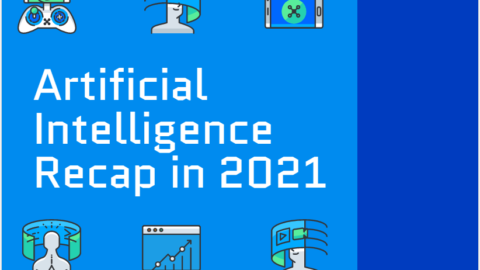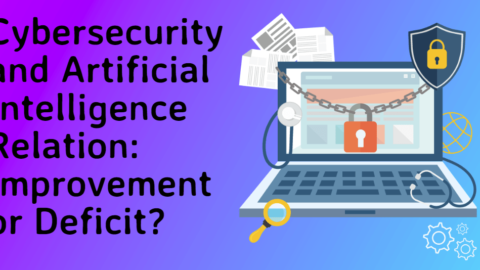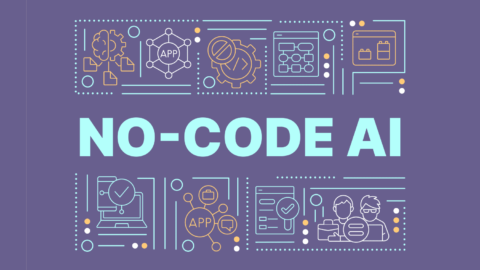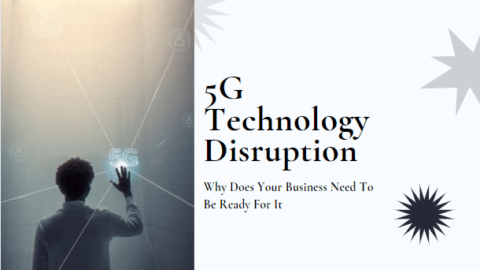How I Create and Code AI Startup Ideas in 48 hours – OpenAI
To our esteemed readers at projectcubicle.com, we extend a warm welcome. This guide is designed with you in mind, aiming to empower you with the knowledge and tools necessary to navigate the exhilarating domain of AI startups efficiently. Join us as we explore the art of turning visionary ideas into reality, ensuring your journey is not just about speed but about making informed, intelligent decisions that bring your AI ambitions to fruition. Welcome aboard, and let’s embark on this transformative adventure together.
Table of Contents
In today’s world, technology moves very quickly. Being able to turn ideas for AI startups into working examples fast is very important. This guide takes you through the exciting process of making ai business startup ideas come to life in just 48 hours. It combines careful planning, technical skills, and creative ideas. Also, we’ll show you how to start with a simple idea and quickly make something real and useful. This journey is not just about speed; it’s about smart thinking, choosing the right tools, and putting your AI business startup ideas into action. Whether you’re new to AI or have been working with it for a while, this guide will help you move quickly and make your innovative ideas a reality.
Finding Your Muse: Sparking AI Innovation
The genesis of any groundbreaking AI startup lies in that eureka moment. Also, these flashes of inspiration often emerge from everyday challenges, unmet market needs, or the ambition to enhance existing technological solutions. Take, for instance, the development of AI applications in healthcare, such as predictive analytics for patient care; these ai business startup ideas are usually born out of a critical analysis of the limitations in current medical technology.
To cultivate these innovative ai business startup ideas, it’s essential to remain perpetually curious, always probing the boundaries of what technology can achieve. Whether the aim is to automate routine tasks, deliver personalized educational content, or revolutionize sectors like healthcare, the focus should be on identifying areas where AI can significantly augment or improve upon existing services.
Laying the Groundwork: In-Depth Planning and Research
The journey from concept to prototype begins with thorough planning and research. This stage is foundational, demanding clarity in goal-setting for the 48-hour sprint. Objectives may range from crafting a basic prototype to conducting user validation studies or outlining a comprehensive development roadmap.
Market analysis is paramount, as understanding the landscape helps in pinpointing the target demographic, assessing competitive offerings, and foreseeing potential obstacles. For an AI solution aimed at personalizing education, this means delving into the nuances of educational technology, identifying gaps, and precisely determining how AI can deliver a more customized, impactful learning journey.

How I Create and Code AI Startup Ideas in 48 hours – OpenAI
Selecting Your Tools: The Developer’s Arsenal
Choosing the right technological stack is akin to selecting the finest tools for crafting a masterpiece. For AI projects, programming languages like Python stand out due to their simplicity and the extensive libraries available for AI and machine learning projects, such as TensorFlow and PyTorch. Also, the specific needs of the project, coupled with the developer’s expertise, guide the selection of development tools.
Utilizing open-source libraries and APIs can drastically accelerate the development process, enabling developers to focus on refining the core idea rather than getting bogged down by the intricacies of basic model construction.
The Development Sprint: Bringing Ideas to Life
The actual coding phase is where concepts begin to materialize. By breaking down the work into manageable segments and employing micro-deadlines within the 48-hour frame, developers can maintain momentum and focus. Starting with a simple functionality, like a basic dialogue flow for an AI chatbot, and progressively integrating more complex features ensures steady progress.
A robust debugging and iterative testing framework is critical for early and swift identification of issues, keeping the project on course. Collaboration tools and version control systems such as Git are indispensable for efficiently managing code changes and facilitating team synergy.
Incorporating Feedback: Refining Through Real-World Insights
Arguably, one of the most crucial steps in this rapid development cycle is the integration of feedback. Even within the constrained timeframe, soliciting early user input can unveil critical insights, steering the project towards a more refined and market-ready product.
For instance, initial feedback on an AI fitness application might highlight a preference for diverse workout routines or enhanced dietary tracking features, allowing for immediate adjustments that significantly enhance the product’s appeal.
Preparing for Launch: Final Touches and Strategic Outreach
As the 48-hour deadline draws near, the focus shifts towards preparing the AI solution for a preliminary release. This phase involves fine-tuning the user interface, ensuring backend stability, and devising a basic yet effective marketing strategy to attract early adopters and garner attention from potential investors and the media.
Leveraging social media, tech forums, and crowdfunding platforms can be instrumental in building anticipation and securing an initial user base, providing a solid foundation for further growth and development.
Beyond the Initial Sprint: Charting the Path Forward
The journey doesn’t end with the initial coding marathon. Post-launch feedback becomes a roadmap for ongoing iteration, guiding continuous improvement and scaling efforts. This approach not only validates the initial concept swiftly but also lays the groundwork for sustained development and market expansion.
In the dynamic realm of tech startups, the capacity to rapidly prototype and introduce innovative AI solutions provides a formidable competitive edge, underscoring the transformative potential of swift, strategic development cycles.
Example: AI-Powered Food Waste Reduction App
Concept Overview: The idea is to develop an AI-powered app aimed at reducing household food waste by suggesting recipes based on ingredients users already have in their kitchens. Also, the app will also track expiration dates and alert users when products are about to expire, integrating a user-friendly shopping list feature to avoid overbuying.
Challenge 1: Time Constraint
- Solution: Prioritize the development of a minimal viable product (MVP) that includes three core functionalities:
- Ingredient Recognition: Utilize AI to recognize ingredients through text input or by scanning grocery receipts.
- Recipe Suggestion Engine: Develop a basic algorithm that suggests recipes based on the ingredients detected.
- Expiration Tracker: Implement a simple feature to input and track the expiration dates of purchased items.
Challenge 2: Scope Management
- Solution: Focus on the essential features that demonstrate the app’s value proposition. In this case:
- Ingredient Recognition: Start with a limited database of common ingredients and the ability to recognize them from text input, setting the foundation for later integrating image recognition through updates.
- Recipe Suggestion Engine: Initially, curate a small, versatile recipe database that can create meals from a broad range of common ingredients, ensuring the app can provide value immediately.
- Expiration Tracker: Implement a manual input method for expiration dates, planning to introduce automatic recognition in future versions.
Development Process:
- Day 1: Planning and Initial Setup
- Morning: Define the project’s scope and outline the features for the MVP. Decide on the tech stack, choosing Python for its strong AI and machine learning libraries (like TensorFlow for future image recognition features) and a simple, intuitive front-end framework for the app interface.
- Afternoon: Start with the recipe suggestion engine, using Python to create a basic matching algorithm that can suggest meals based on inputted ingredients.
- Day 2: Development and Prototyping
- Morning: Develop the ingredient recognition feature, focusing on text input. Use pre-existing food databases available through APIs to speed up the process.
- Afternoon: Implement the expiration tracker, allowing users to manually input expiration dates and receive notifications. Begin integrating the front-end and back-end components.
- Final Hours: Testing and Feedback Loop
- Evening: Conduct quick, iterative testing with a small group of users or team members to identify bugs and gather initial feedback, particularly on the app’s user interface and the accuracy of the recipe suggestions.
Feedback and Iteration:
- Initial Feedback: Users appreciate the recipe suggestions but desire a more automated way to input expiration dates and a broader recipe database.
- Iteration Plan: Post-48-hour launch, plan to expand the recipe database and explore OCR (Optical Character Recognition) technology to automate the input of expiration dates from receipt scanning.
Launch and Beyond:
- Soft Launch: Present the MVP on tech forums and social media platforms, emphasizing the app’s mission to reduce food waste and its innovative AI-driven features. Gather user feedback for continuous improvement.
- Future Development: Based on user data and feedback, prioritize adding image recognition for ingredient input and expanding the AI’s capabilities to include more complex dietary preferences and restrictions.
Which Startup Is Best to Start & What Is the Most Successful Small Business to Start?
The “best” startup or small business to start highly depends on your expertise, market demand, and investment capacity. However, technology-focused startups, renewable energy solutions, health and wellness, online education, and e-commerce have shown strong growth potential. For example, a tech startup focusing on AI, cybersecurity, or SaaS products can be lucrative and future-proof.
How Do I Choose a Startup Idea & How Do I Get Unique Startups?
To choose a startup idea and ensure it’s unique:
- Identify Problems: Look for everyday challenges that lack efficient solutions.
- Market Research: Investigate current trends, demands, and gaps in the market.
- Leverage Your Skills: Utilize your personal strengths, knowledge, and interests.
- Innovation: Think about how you can improve existing solutions or create new ones.
- Validation: Validate your idea through surveys, feedback, and small-scale testing.
Which Startup Is Best in 2023 & Which Business Is Best for Future?
Startups in tech innovation, sustainable energy, health tech, and digital finance are promising in 2023 and beyond. Businesses that adapt to remote work, AI, and sustainability trends are positioned well for the future.
What Is the Most Successful Startup & Which Business Is Most Profitable?
The most successful startups often disrupt traditional industries with technology or innovative business models—think of companies like Airbnb, Uber, and SpaceX. Also, most profitable businesses tend to have high demand and low operational costs, such as digital products, software as a service (SaaS), and renewable energy.
What’s the Easiest Business to Start?
The easiest business to start is one that requires low initial investment and can be managed online. Also, examples include dropshipping, affiliate marketing, content creation, and consulting services in your area of expertise.
Conclusion
When choosing a startup or business to start, focus on areas where you can provide unique value, solve real problems, and scale efficiently. The best option combines your passion and skills with market demand. Keep an eye on emerging trends and technologies to stay ahead and adapt as needed. Success in business often comes from a combination of innovation, timing, and execution, rather than just a good idea.
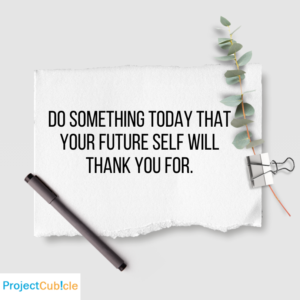
motivations
Hello, I’m Cansu, a professional dedicated to creating Excel tutorials, specifically catering to the needs of B2B professionals. With a passion for data analysis and a deep understanding of Microsoft Excel, I have built a reputation for providing comprehensive and user-friendly tutorials that empower businesses to harness the full potential of this powerful software.
I have always been fascinated by the intricate world of numbers and the ability of Excel to transform raw data into meaningful insights. Throughout my career, I have honed my data manipulation, visualization, and automation skills, enabling me to streamline complex processes and drive efficiency in various industries.
As a B2B specialist, I recognize the unique challenges that professionals face when managing and analyzing large volumes of data. With this understanding, I create tutorials tailored to businesses’ specific needs, offering practical solutions to enhance productivity, improve decision-making, and optimize workflows.
My tutorials cover various topics, including advanced formulas and functions, data modeling, pivot tables, macros, and data visualization techniques. I strive to explain complex concepts in a clear and accessible manner, ensuring that even those with limited Excel experience can grasp the concepts and apply them effectively in their work.
In addition to my tutorial work, I actively engage with the Excel community through workshops, webinars, and online forums. I believe in the power of knowledge sharing and collaborative learning, and I am committed to helping professionals unlock their full potential by mastering Excel.
With a strong track record of success and a growing community of satisfied learners, I continue to expand my repertoire of Excel tutorials, keeping up with the latest advancements and features in the software. I aim to empower businesses with the skills and tools they need to thrive in today’s data-driven world.
Suppose you are a B2B professional looking to enhance your Excel skills or a business seeking to improve data management practices. In that case, I invite you to join me on this journey of exploration and mastery. Let’s unlock the true potential of Excel together!
https://www.linkedin.com/in/cansuaydinim/


